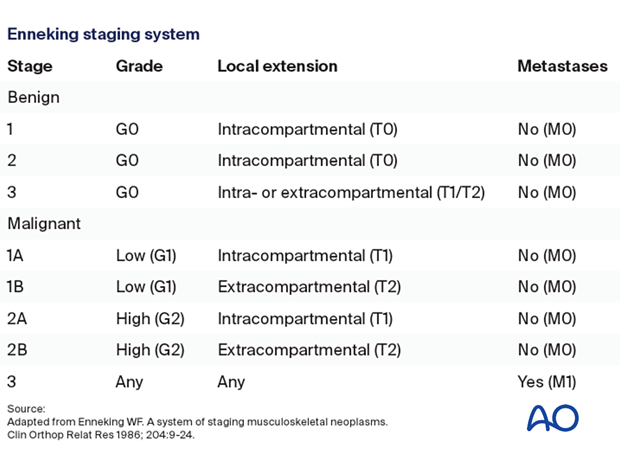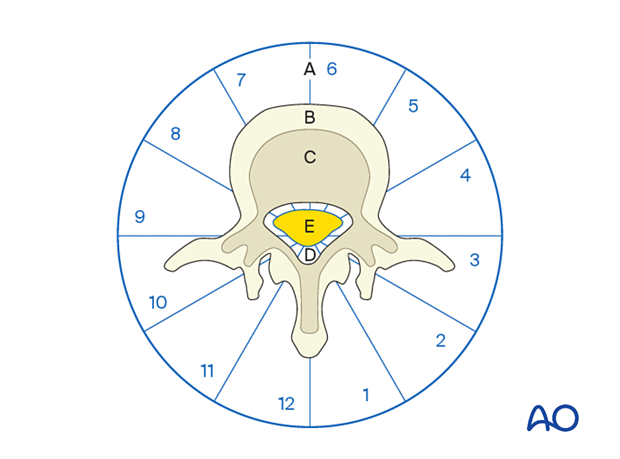Oncological and surgical staging
1. Enneking classification
This system classifies primary tumors based on:
- Their biological aggressiveness (G)
- Local extent (T)
- Presence or absence of metastasis (M)
Based on tumor-host margin, benign tumors are further subcategorized as being:
- Latent (stage 1)
- Active (stage 2)
- Aggressive (stage 3)
Biological aggressiveness is divided between:
- Benign (G0)
- Low-grade malignant (G1)
- High-grade malignant (G2)
Local extent is divided into:
- Encapsulated (T0)
- Intracompartmental (T1)
- Extracompartmental (T2)
Absence of metastasis is labeled M0, and presence of metastasis is labeled M1.
The combination of these three factors culminates in an Enneking stage, as described in the table.
- Enneking WF. A system of staging musculoskeletal neoplasms. Clin Orthop Relat Res 1986;204:9–24.

The Enneking oncological staging system guides the type of surgical resection required to ensure the best local control.
Based on the Enneking stage, a specific resection margin is recommended.
If a surgical resection follows the Enneking principle, the resection will be labeled Enneking appropriate (EA). Otherwise, the surgical resection will be labeled Enneking inappropriate (EI).
- Boriani S, Weinstein JN, Biagini R. Primary bone tumors of the spine. Terminology and surgical staging. Spine 1997;22(9):1036–1044.
- Chan P, Boriani S, Fourney DR, et al. An Assessment of the Reliability of the Enneking and Weinstein-Boriani-Biagini Classifications for Staging of Primary Spinal Tumors by the Spine Oncology Study Group Spine 2009 Feb 15;34(4):384–391.

2. WBB classification
The Weinstein-Boriani-Biagini (WBB) classification assists surgical planning by establishing feasibility criteria and strategies to achieve oncological resection of tumors.
In this surgical staging system, the vertebra is divided into 12 equal radiating zones in an axial plane.
The tumor is further divided into five concentric layers centered around the thecal sac, and the presence or absence of vertebral artery involvement:
- Soft tissue (A)
- Intraosseous superficial (B)
- Intraosseous deep (C)
- Extradural (D)
- Intradural (E)
- Vertebral artery involvement (F)
Based on these stages, surgical procedures are proposed.














